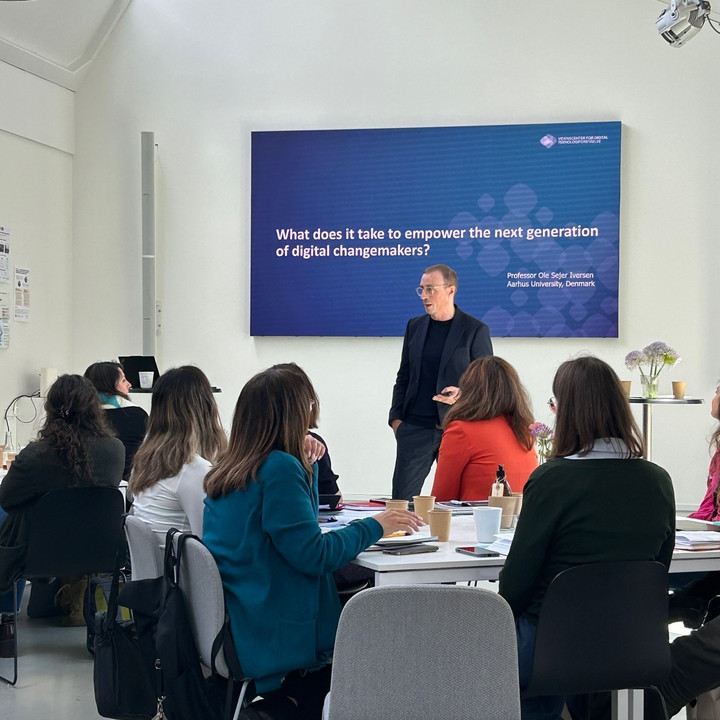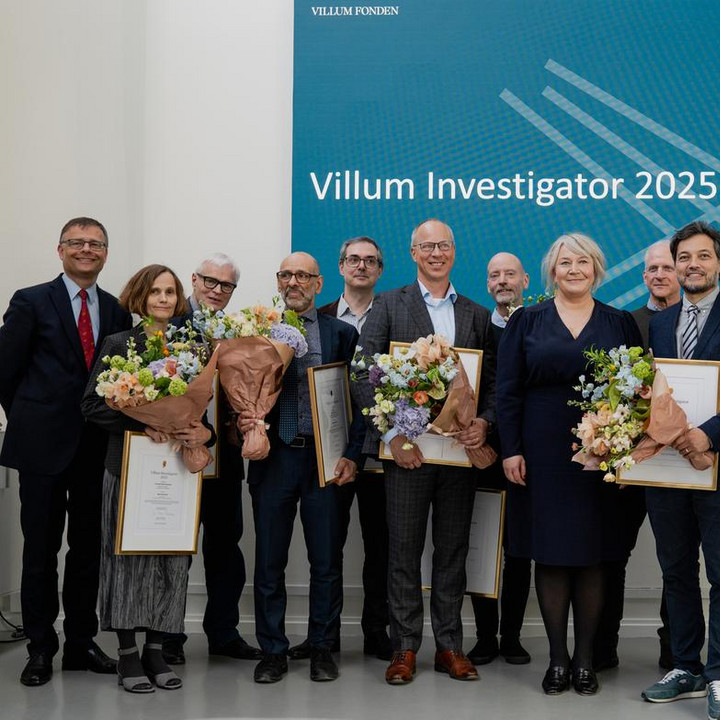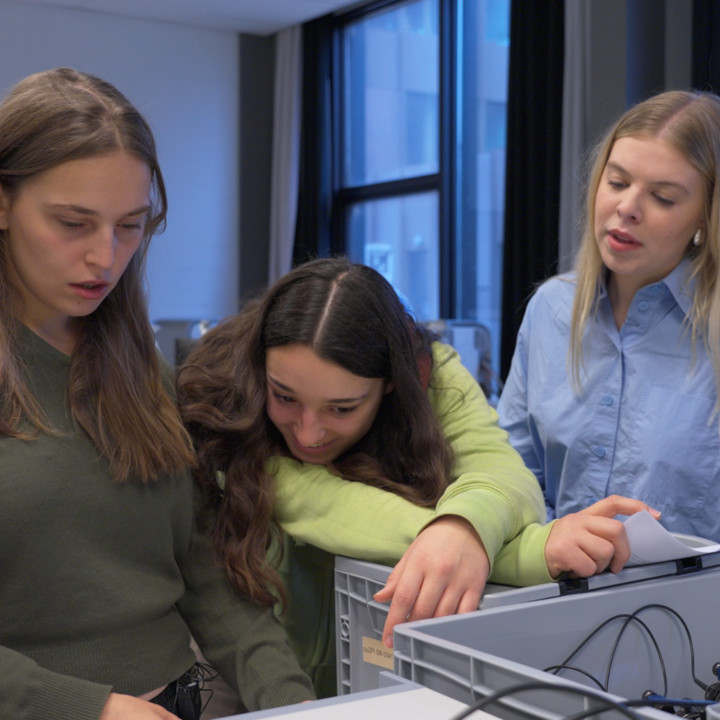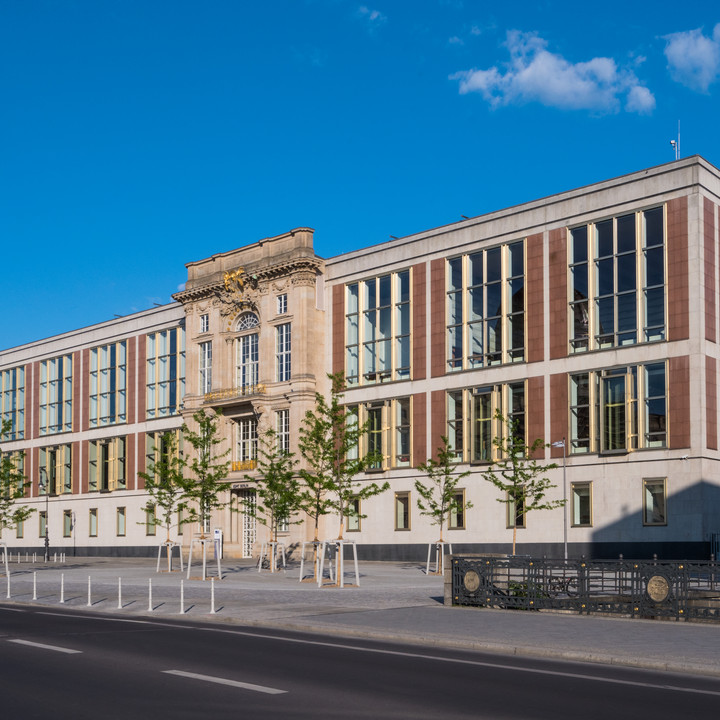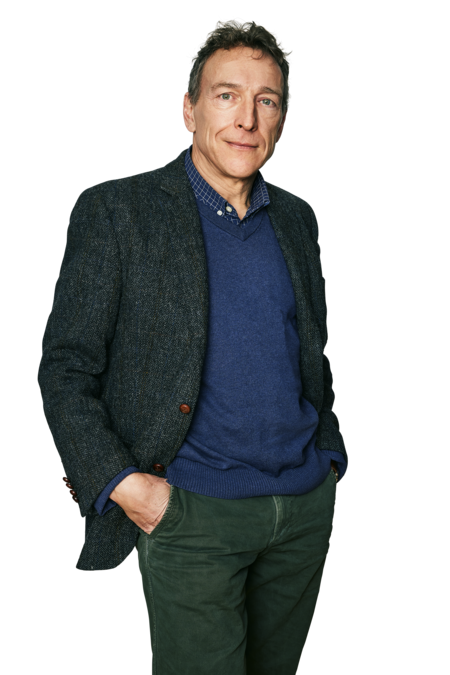Villum Experiment: 51 researchers receive DKK 99 million for research experiments

14.09.2021 I Latest news
Do sponges sleep? Can microwaves be used to make cheap green fuels? How to communicate security in election technologies? These are three of the research questions that 51 researchers in the technical and natural sciences are now given grants to try to find answers to.
Focus
The Villum Experiment Programme has been created for research projects in technical and natural sciences that challenge the norm and have the potential fundamentally to change the way we approach important subjects. The applicants are anonymous to the international assessors to increase the focus on the research ideas and to let the researchers think freely.
The grant is of DKK 1-2m and runs for up to two years. The programme is announced annually in open competition with the application deadline in March.
The programme was launched in 2017, and since its inception, 246 researchers have received a grant. To assess whether the programme lives up to its founding objectives, the foundation has initiated an evaluation of the programme. The Danish Center for Studies in
Research and Research Policy (CFA) at Aarhus University, which is responsible for the evaluation, expects to be able to publish the results in 2024.
Read more about the Villum Experiment Programme.
This year’s Villum Experiment Programme grantees have been selected from a highly competitive field of almost 400 applicants that have come through a unique ‘eye-of-the-needle’ selection process. During the selection process, the applicants were anonymised for the assessment panel. The 21 international assessors have thus not had the opportunity to peek at the applicants’ CVs and academic credentials, and have therefore judged the research ideas solely on the basis of whether they challenge the norm and have the potential to change the world and our knowledge of it.
“The Villum Experiment Programme is an experiment in itself. In the programme, we commission free creative research and experiments for up to DKK 100 million annually. With high venture capital and an anonymous selection process, we want to contribute to testing far-out research ideas and unconventional takes on the world. No one can predict where the next major scientific breakthroughs will occur, and we firmly believe in the potential of unleashing the researchers’ own creativity,” says Thomas Bjørnholm, Executive Chief Scientific Officer, VILLUM FONDEN.
This year, DKK 98,663,650 will be distributed between 51 researchers affiliated with Danish universities. The recipients are young, old and somewhere in between. Here we find both postdocs and professors – because it is the idea and not the CV that counts. Common to all the grantees is the desire for scientific innovation and technical research. In the projects, the ambitious research delves into an extensive range of topics – from fake news to pre-history.
One of the projects stems from the global challenges of digital disinformation in relation to election technology. Within the scope of her project ‘Communicating trust in the security of election technologies’, Assistant Professor Oksana Kulyk from the IT University of Copenhagen will develop methods to effectively communicate the security of election technologies and thus help to prevent disinformation efforts and increase confidence in electoral systems:
“Establishing and maintaining public trust in election integrity is already a challenge for many countries that is further exacerbated when information and communication technologies, such as cryptography-based electronic voting systems, are introduced in the electoral process. The lack of transparency, real or preserved, makes it difficult for the lay voters to be convinced that election integrity is guaranteed, which in turn can lead to a loss of public trust and be exploited by disinformation campaigns to destroy trust even further. The experiments that we conduct under the umbrella of this Villum Experiment project will help us understand the complexities of how trust mechanisms work, how voters build trust in election technologies, and how to communicate trust effectively and transparently,” says Assistant Professor Oksana Kulyk.
The assessment process
The overall success rate for applicants for this year’s Experiment is just over 13%. The applications have been assessed by an assessment panel consisting of 21 international external experts divided into four sub-panels: ‘Earth & Space’, ‘Life Science’, ‘Physical Science & Math’ and ‘IT & Engineering’.
Applications are judged on their originality, potential impact, and how they fit into the programme’s intent to promote unconventional ideas.
Each external expert has also had the opportunity to allocate a so-called ‘trump’ to an application to give this application precedence. This is done to challenge the traditional consensus-based selection procedures. See review sheet (PDF).
Another Experiment project looks back in history in search of molecular evidence that our extinct Ice Age ancestors went to sleep as a survival strategy to gain new knowledge about behavioural adaptations – insights that may prove useful if we become a species who travels in space.
A project with a sustainable focus will use microwaves in combination with a special ceramic material to produce hydrogen cheaply and sustainably for use in hydrogen cars or for conversion to green fuel.
And then there is the project ‘Do sponges sleep?’ about the potentially sleeping fungi. The project seeks to elucidate the early development and function of sleep in humans and animals by examining sleep-like behaviours in fungi. Common to all the Experiment projects is that they are anything but boring.
Torsten Nygård Kristensen, Professor: Using bugs living in insect pests to control the pests, DKK 2 million.
Charlotte Knudsen, PhD: Communication across the kingdoms of life: can bacterial RNA viruses affect gene expression in eukaryotic cells?, DKK 1.8 million.
Christoffer Karoff, Associate professor: A new approach for monitoring methane emissions from space, DKK 2 million.
Friederike Gründger, Dr.: Phage therapy to boost bacterial oil spill clean-up in the Arctic, DKK 2 million.
Hooman Farkhani, Assistant professor: Spin-Grain: Spintronic nano-grains with local vortex oscillations for reservoir computing, DKK 1.9 million.
Ian Marshall, Assistant professor: ElectroMicrobiological Oxygen Generation in Dark, Anoxic Sediments (OxyGen), DKK 2 million.
Jeppe Lauritsen, Professor: Are Topological Insulators Active in Electrocatalytic Reactions?, DKK 2 million.
Johnna Holding, Research scientist: Does organic matter released from the melting Greenland Ice Sheet influence cloud processes in the Arctic?, DKK 2 million.
Kurt Gothelf, Professor: Small Molecule DNA Rotaxanes, DKK 2 million.
Magnus Kjærgaard, Assistant professor: Oxygen-free biosynthesis in microbial cell factories, DKK 2 million.
Mikkel Heide Schierup, Professor: Genomic archaeology: Inferring human cultural practices over the past 40.000 years from whole genomes, DKK 2 million.
Peter Funch, Associate professor: Do sponges sleep?, DKK 2 million.
Shubiao Wu, Associate professor: A novel microbial pathway towards simultaneous mitigation of N2O and CH4 in wetlands, DKK 1.9 million.
Torben R. Jensen, professor, Novel Trivalent Cation Conductors for Future Batteries, DKK 2 million.
Abhay Shivayogimath, Dr., RESULT - Rethinking Sulphur Lithium Battery Technology, DKK 1.9 million.
Alex Toftgaard Nielsen, Professor, Microbial consortium-based conversion of CO2 to biochemicals, DKK 2 million.
Anne Strunge Meyer, Professor: Enzymatic upcycling of polyethylene terephthalate (PET) into high performance polyamides, DKK 1.7 million.
Andreas Kaiser, Associate professor: Advanced Metal-Organic Framework-Nanofiber architectures for conversion of CO2 into hydrocarbons by solar light, DKK 1.9 million.
Barth Smets, Professor: The Renaissance of Microbial Cultivation in Support of Biodiscovery, DKK 2 million.
Jonatan Bohr Brask, Dr.: From laws to limits: Thermodynamic constraints on quantum correlations, DKK 1.7 million.
Lars Jelsbak, Professor: Recording microbial signals in soil microbiomes, DKK 2 million.
Manh-Ha Doan, Postdoc.: Seeking room-temperature superconductivity with exciton condensate in van der Waals heterostructures, DKK 2 million.
Manuel José Nieto Domínguez, Postdoctoral researcher: Repurposing antibiotic resistance to capture new-to-Nature chemistries in a bacterial host, DKK 2 million.
Massimo Rolle, Associate professor: EK-GPS: Driving bacteria in heterogeneous porous media, DKK 2 million.
Rafael Taboryski, Professor: Light Reconfigurable Nano-fluidics - LiRN-fluidics, DKK 2 million.
Shfaqat Abbas Khan, Professor: Prediction of ice mass loss induced Earthquakes in Greenland, DKK 1.6 million.
Tommy Norin, PhD: Why does metabolic rate scale with body size?, DKK 2 million.
Vincenzo Esposito, Professor: Microwaved Ferroelectric-Chemical Antenna for P2X - MANTRA, DKK 2 million.
Weigang Lin, Associate professor: Calcium based CO2 capture by pressure swing combined with heat storage materials, DKK 2 million.
Yazhou Wang, Postdoc: Photoacoustic detection of microplastics, DKK 2 million.
Yifeng Zhang, Associate professor: Light-driven green ammonia synthesis in soil using bio-inorganic hybrid electrode (SolN), DKK 2 million.
Yi Yang, Assistant professor: Reversing multicolor tomography for precise property control in ultrafast 3D printing (REMUTO), DKK 2 million.
Nanna Bjørnholt Karlsson, Senior researcher: Observing the Unknown Winter Freshwater in Greenland Fjords, DKK 1.4 million.
Anders Garm, Associate professor: Learning without a conventional brain, DKK 2 million.
Alexey Solodovnikov, Associate professor: The Baltic Amber Enigma, DKK 1.9 million.
Brian Møller Andersen, Professor: Emergent Quantum Phases and Superconductivity in Flatband-land, DKK 1.8 million.
Daniel Ashbrook, Associate professor: Dynamically adjustable haptics for 3D-printed user interfaces via metamaterials augmented with force-transmission lines, DKK 2 million.
Demi Tristan Djajadi, Postdoc: Cleaning waste with waste: using bio-based industrial sidestreams to remove micro- and nanoplastic from water bodies, DKK 1.9 million.
Frederik Tidemand, Postdoc: Nanodisc production in living cells facilitates structural studies of membrane proteins, DKK 2 million.
Frido Welker, Assistant professor: Snow Queen and Odin in the Pleistocene - did our relatives hibernate?, DKK 2 million.
James Avery, Associate professor: OsteoMorph: Understanding Bone Microphysics through Computational Morphology of SRuCT, DKK 1.7 million.
Louise Isager Ahl, PhD: Exploring plant evolution through conformational cell wall glycomics, DKK 2 million.
Mette Bendixen, Assistant professor: Drawing a line in the sand: Mapping sand mining in Africa for future sustainable usage, DKK 1,5 million.
Michael Pittelkow, Associate professor: New cyclic carbon allotropes, DKK 2 million.
Nicolaj Krog Larsen, Dr.: Cosmogenic Nuclide Memory of Rocks (CoNMoR), DKK 2 million.
Niels Johan Christensen, Researcher: 4D Printing with Proteins: Pumped Multienzyme Reactors, DKK 1.9 million.
Nikos Hatzakis, Associate professor: Single molecule sequencing of oligosaccharides (SingleCarb), DKK 2 million.
Biljana Mojsoska, Assistant professor: Novel bio-inspired material: programmed functionalization of peptoid nanosheets, DKK 2 million.
Luciana Tavares, Associate professor: New dielectric materials for next generation high performance capacitors, DKK 2 million.
Volodymyr Zenin, Dr.: Making a single photon capable of detecting a single molecule, DKK 2 million.
Oksana Kulyk, Assistant professor: Communicating trust in the security of election technologies, DKK 2 million.
